We included HMH Into Math Grade 5 Answer Key PDF Module 16 Lesson 2 Multiply Decimals to make students experts in learning maths.
HMH Into Math Grade 5 Module 16 Lesson 2 Answer Key Multiply Decimals
I Can multiply two decimal numbers by applying an understanding of place value.
Spark Your Learning
Nikki buys items from the bulk bins at the grocery store. The table shows the item, the number of pounds that Nikki buys, and the cost for one pound of the item.
Sort each item by cost for the amount that Nikki buys.
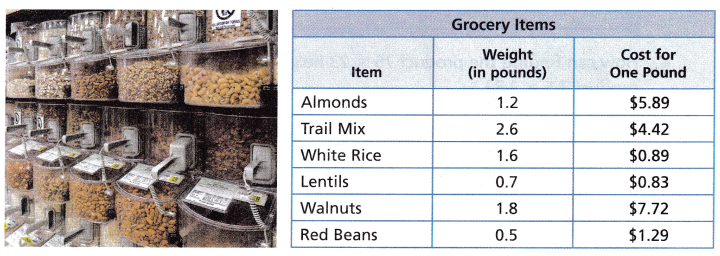
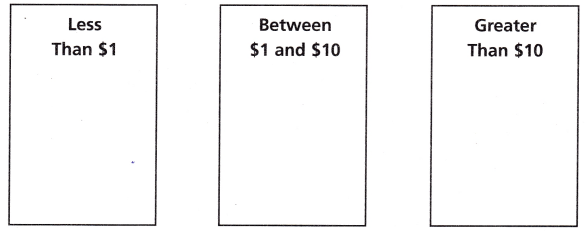
Answer:
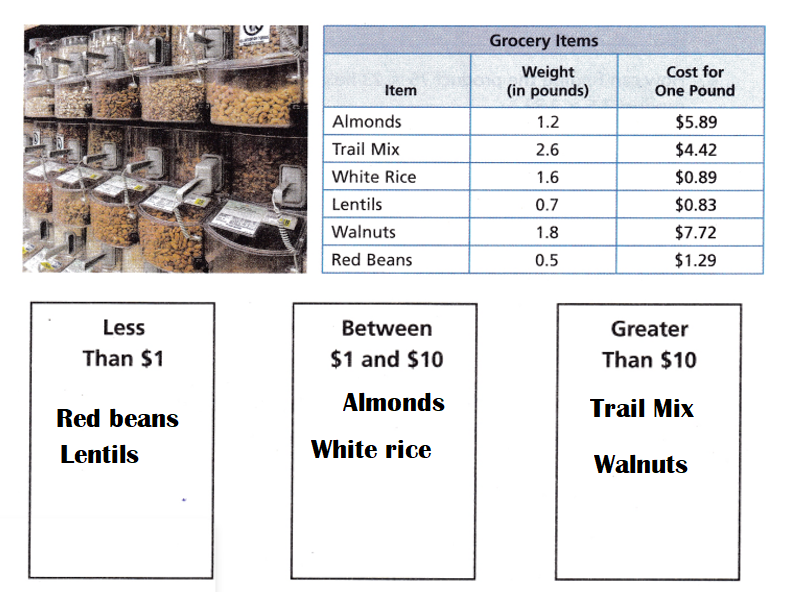
Explanation:
Weight of Almonds = 1.2 pounds.
Cost of each pound of almonds = $5.89.
Total cost of almonds = Weight of Almonds × Cost of each pound of almonds
= 1.2 × $5.89
= $7.068.
Weight of Trail Mix = 2.6 pounds.
Cost of each pound of Trail Mix = $4.42.
Total cost of Trail mix = Weight of Trail Mix × Cost of each pound of Trail Mix
= 2.6 × $4.42
= $11.492.
Weight of White rice = 1.6 pounds.
Cost of each pound of White rice = $0.89.
Total cost of White rice = Weight of White rice × Cost of each pound of White rice
= 1.6 × $0.89
= $1.424.
Weight of Lentils = 0.7 pounds.
Cost of each pound of Lentils = $0.83.
Total cost of Lentils = Weight of Lentils × Cost of each pound of Lentils
= 0.7 × $0.83
= $0.581.
Weight of Walnuts = 1.8 pounds.
Cost of each pound of Walnuts = $7.72.
Total cost of Walnuts = Weight of Walnuts × Cost of each pound of Walnuts
= 1.8 × $7.72
= $ 13.896.
Weight of Red beans =0.5 pounds.
Cost of each pound of Red beans = $1.29.
Total cost of Red beans = Weight of Red beans × Cost of each pound of Red beans
= 0.5 × $1.29
= $0.645.
Turn and Talk Which item(s) between $1 and $10 cost more than $5? How do you know?
Answer:
We got to know by checking the total amount of all items .
Explanation:

Item(s) between $1 and $10 cost more than $5:
=>Less than $:
Red beans
Lentils
=>Between $1and $10.
Almonds
White rice
=>Greater than $10:
Trail Mix
Walnuts
Build Understanding
Question 1.
Oliver is making a pasta salad. He needs 2.3 ounces of dry pasta for 1 serving. He wants to make 7.5 servings. How much dry pasta does he need?
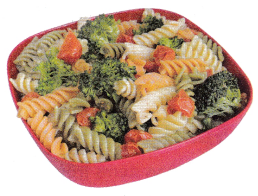
A. What multiplication expression models the situation?
Answer:
Number of ounces of dry pasta he needs = 17.25.
Explanation:
Number of ounces of dry pasta for 1 serving he needs = 2.3.
Number of dry pasta he wants to make for servings = 7.5.
Number of ounces of dry pasta he needs = Number of ounces of dry pasta for 1 serving he needs × Number of dry pasta he wants to make for servings
= 2.3 × 7.5
= 17.25.
B. What is an estimate for the product? How did you find it?
Answer:
We can find an estimate for the product by rounding the given factors to the required place value.
Explanation:
Number of ounces of dry pasta he needs = 17.25.
An estimate for the product = 20.
C. How can finding the product 75 × 23 help you to find the product 7.5 × 2.3?
Answer:
The product (75 × 23) ÷ 100 = 1725 ÷ 100 = 17.25.
Explanation:
The product (75 × 23) ÷ 100 = 1725 ÷ 100 = 17.25.
=> The product (7.5 × 2.3) = 17.25.
D. What is the product 75 × 23?

Answer:
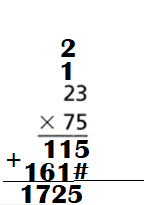
Explanation:
Product of 75 × 23 = 175.
E. How can you use your estimate to determine the placement of the decimal point in the whole-number product?
Answer:
You can use your estimate to determine the placement of the decimal point in the whole-number product by rounding the decimal to the nearest whole number.
Explanation:
To find a reasonable estimate using decimal numbers, round the decimal to the nearest whole number.
F. How much dry pasta does Oliver need?
Answer:
17.25 ounces of dry pasta he needs.
Explanation:
Number of ounces of dry pasta for 1 serving he needs = 2.3.
Number of dry pasta he wants to make for servings = 7.5.
Number of ounces of dry pasta he needs = Number of ounces of dry pasta for 1 serving he needs × Number of dry pasta he wants to make for servings
= 2.3 × 7.5
= 17.25.
Turn and Talk If the amount for one serving increases from 2.3 ounces to 2.6 ounces, does that change the placement of the decimal point? Explain your answer.
Answer:
If the amount for one serving increases from 2.3 ounces to 2.6 ounces, that doesn’t change the placement of the decimal point yet increases the number from 17.25 to 19.50.
Explanation:
If the amount for one serving increases from 2.3 ounces to 2.6 ounces.
=> Number of ounces of dry pasta for 1 serving he needs = 2.6.
Number of dry pasta he wants to make for servings = 7.5.
Number of ounces of dry pasta he needs = Number of ounces of dry pasta for 1 serving he needs × Number of dry pasta he wants to make for servings
= 2.6 × 7.5
= 19.50.
Question 2.
Marta weighs some dry black beans. Her mother asks her to get 1.5 times as much. How many pounds of beans should Marta get?
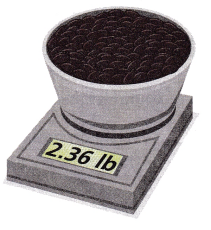
A. To find the product 1.5 × 2.36, first find 15 × 236.

Answer:
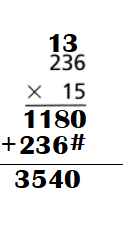
Explanation:
Number of pounds of dry black beans = 2.36.
Her mother asks her to get 1.5 times as much.
=> Number of pounds of beans Marta gets = 1.5 × Number of pounds of dry black beans
= 1.5 × 2.36
= 3.54.
B. Complete each equation.
2.36 × _________ = 2.36
15 × __________ = 1.5
Answer:
2.36 × 1 = 2.36.
15 × 0.1= 1.5.
Explanation:
2.36 × 1 = 2.36.
15 × 0.1= 1.5.
C. By how many decimal place values does 236 differ from 2.36?
Answer:
Two decimal place values 236 differ from 2.36.
Explanation:
Decimal place values 236 differ from 2.36 by two places.
=> 236 ÷ 100 = 2.36.
236 × 0.01 = 2.36.
D. By how many decimal place values does 15 differ from 1.5?
Answer:
One decimal place values 15 differ from 1.5.
Explanation:
Decimal place values 15 differ from 1.5:
=> 15 ÷10 = 1.5.
15 × 0.1 = 1.5.
E. The actual product differs from the whole-number product by the total number of decimal place values. By how many decimal place values does 15 × 236 differ from 1.5 × 2.36?
Answer:
Decimal place values 15 × 236 differ from 1.5 × 2.36 by two places.
=> 15 × 236 = 3540.
1.5 × 2.36 = 3.54.
Explanation:
The actual product differs from the whole-number product by the total number of decimal place values. Decimal place values 15 × 236 differ from 1.5 × 2.36 by two places.
=> 15 × 236 = 3540.
1.5 × 2.36 = 3.54.
F. How many pounds of beans should Marta get?
Answer:
Number of pounds of beans Marta gets = 3.54.
Explanation:
Number of pounds of dry black beans = 2.36.
Her mother asks her to get 1.5 times as much.
=> Number of pounds of beans Marta gets = 1.5 × Number of pounds of dry black beans
= 1.5 × 2.36
= 3.54.
Turn and Talk How can you use the result to find the product 0.15 × 23.6?
Answer:
Both product result is same.
0.15 × 23.6 = (1.5 × 2.36) = 3.54.
Explanation:
Result: Number of pounds of beans Marta gets = 3.54.
0.15 × 23.6 = (1.5 × 2.36) = 3.54.
Check Understanding
Question 1.
Max buys 4.6 pounds of apples that cost $3.40 for one pound.
Write an equation to estimate the total cost.
Answer:
Total cost of the apples = Number of pounds of apples Max buys × Cost of each pound of apples
= 4.6 × $3.40
= $15.64.
Explanation:
Number of pounds of apples Max buys = 4.6.
Cost of each pound of apples = $3.40.
Total cost of the apples = Number of pounds of apples Max buys × Cost of each pound of apples
= 4.6 × $3.40
= $15.64.
What is the total cost?
Answer:
Total cost of the apples = $15.64.
Explanation:
Number of pounds of apples Max buys = 4.6.
Cost of each pound of apples = $3.40.
Total cost of the apples = Number of pounds of apples Max buys × Cost of each pound of apples
= 4.6 × $3.40
= $15.64.
Multiply.
Question 2.

Answer:
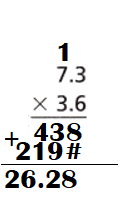
Explanation:
Multiplication of 7.3 and 3.6:
7.3 × 3.6 = 26.28.
Question 3.

Answer:
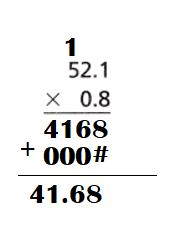
Explanation:
Multiplication of 52.1and 0.8:
52.1 × 0.8 = 41.68.
Question 4.

Answer:
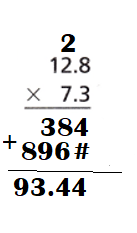
Explanation:
Multiplication of 12.8 and 7.3:
12.8 × 7.3 = 93.44.
On Your Own
Question 5.
Mr. Yuen is buying carpeting for the conference room. He uses the floor plan to determine its area.
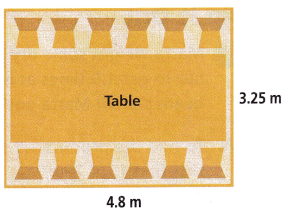
Write an equation to estimate the area of the conference room.
Answer:
Area of the conference room = 15.6 sq m.
Explanation:
Length of the conference room = 4.8m.
Width of the conference room =3.25m.
Area of the conference room = Length of the conference room × Width of the conference room
= 4.8 × 3.25
= 15.6 square m.
What is the product 48 × 325?
Answer:
48 × 325 = 15600.
Explanation:
Product 48 × 325:
=> 48 × 325 = 15600.
What is the area of the conference room? Explain how you used your estimate to find the answer.
Answer:
Estimation of the answer was easy has all required data about the conference room were given and used the area formula and got the solution for the problem.
Explanation:
Length of the conference room = 4.8m.
Width of the conference room =3.25m.
Area of the conference room = Length of the conference room × Width of the conference room
= 4.8 × 3.25
= 15.6 square m.
Multiply.
Question 6.

Answer:
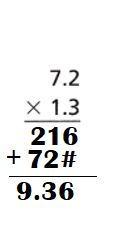
Explanation:
Multiplication of 7.2 and 1.3:
7.2 × 1.3 = 9.36.
Question 7.

Answer:
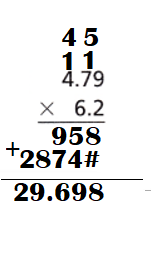
Explanation:
Multiplication of 4.79 and 6.2:
4.79 × 6.2 = 29.698.
Question 8.

Answer:
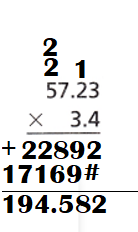
Explanation:
Multiplication of 57.23 and 3.4:
57.23 × 3.4 = 194.582.
Question 9.
Art Claude Monet painted Water Lilies between 1914 and 1926. This painting is in three panels and has its own wall in the Museum of Modern Art in New York City. How much wall space does the painting cover?
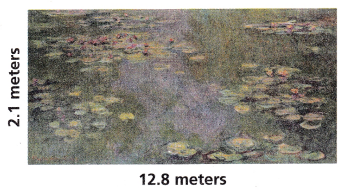
Answer:
Wall space of the painting cover = 26.88 sq m.
Explanation:
Length of the painting = 12.8 m.
Width of the painting = 2.1 m.
Area of the painting = Length of the painting × Width of the painting
= 12.8 × 2.1
= 26.88 sq m.
I’m in a Learning Mindset!
How was I able to explain my thinking about multiplying decimals?
Answer:
In my thinking when we do the process of multiplication of decimals we should be careful in the decimal points placing.
Explanation:
Multiplication of decimals is not quite easy, but in my thinking when we do the process of multiplication of decimals we should be careful in the decimal points placing.